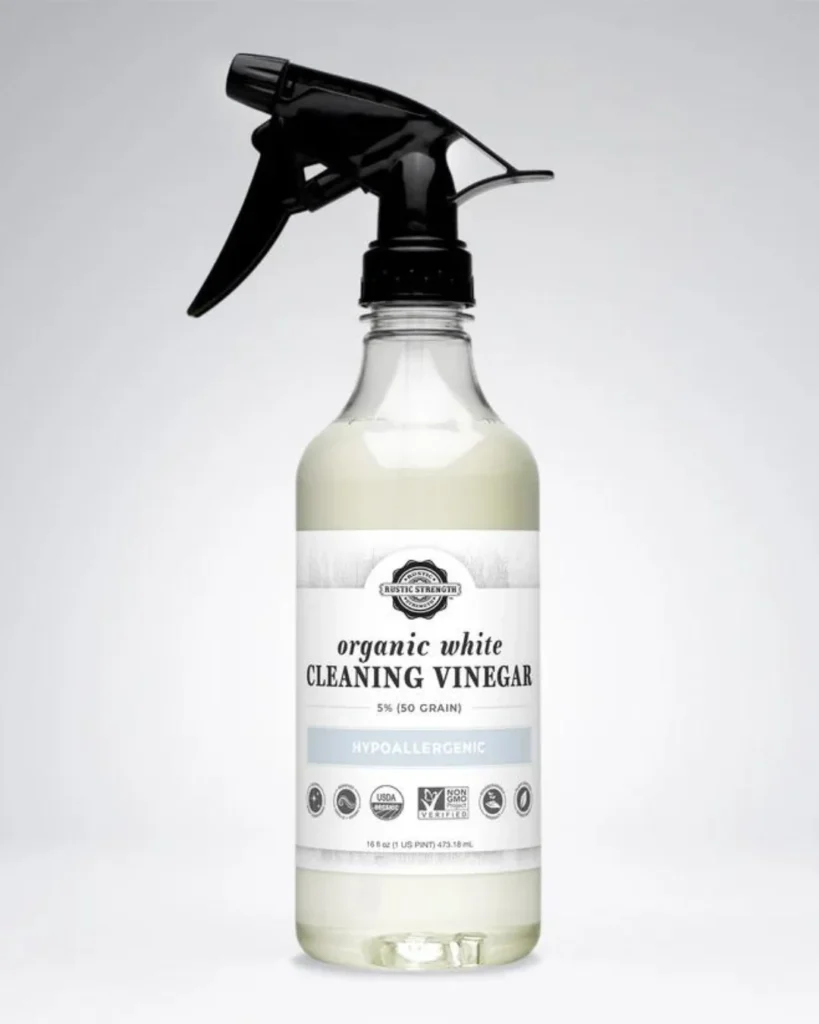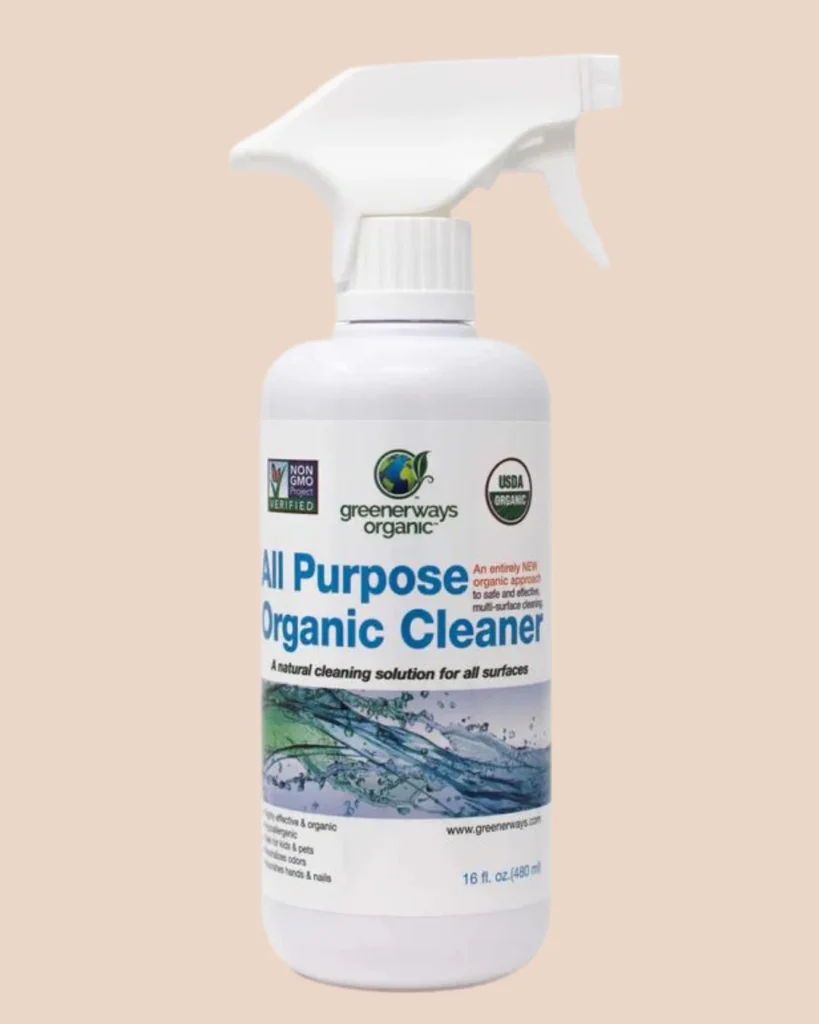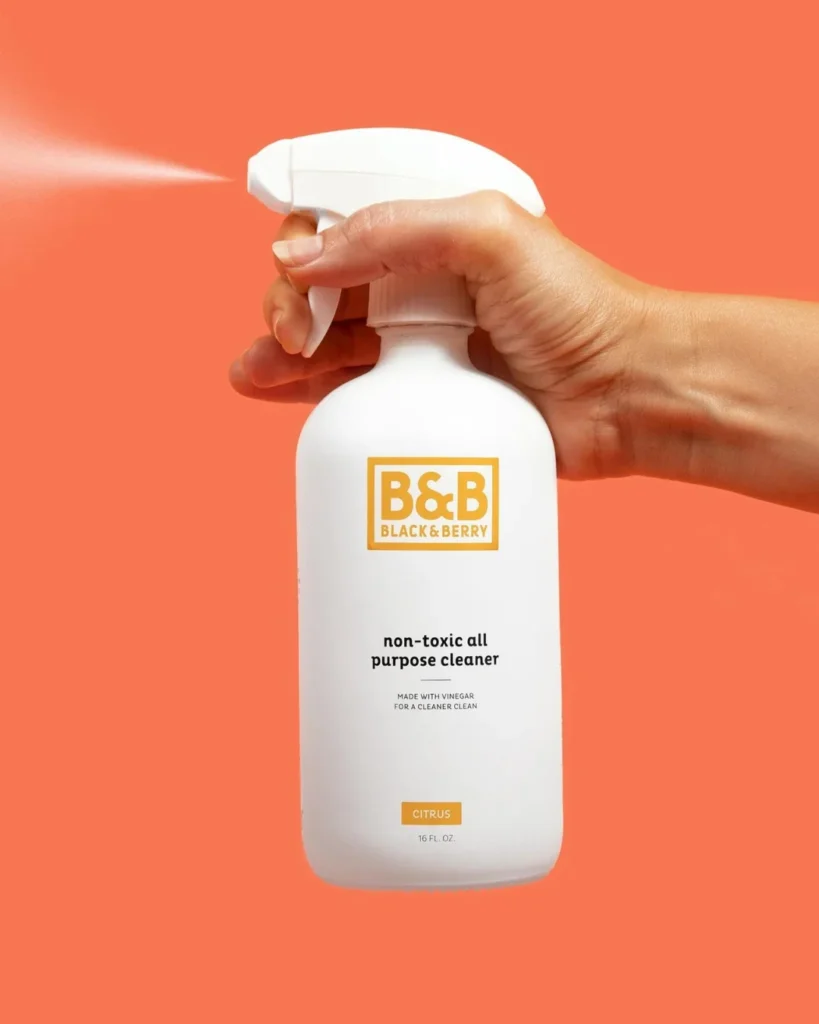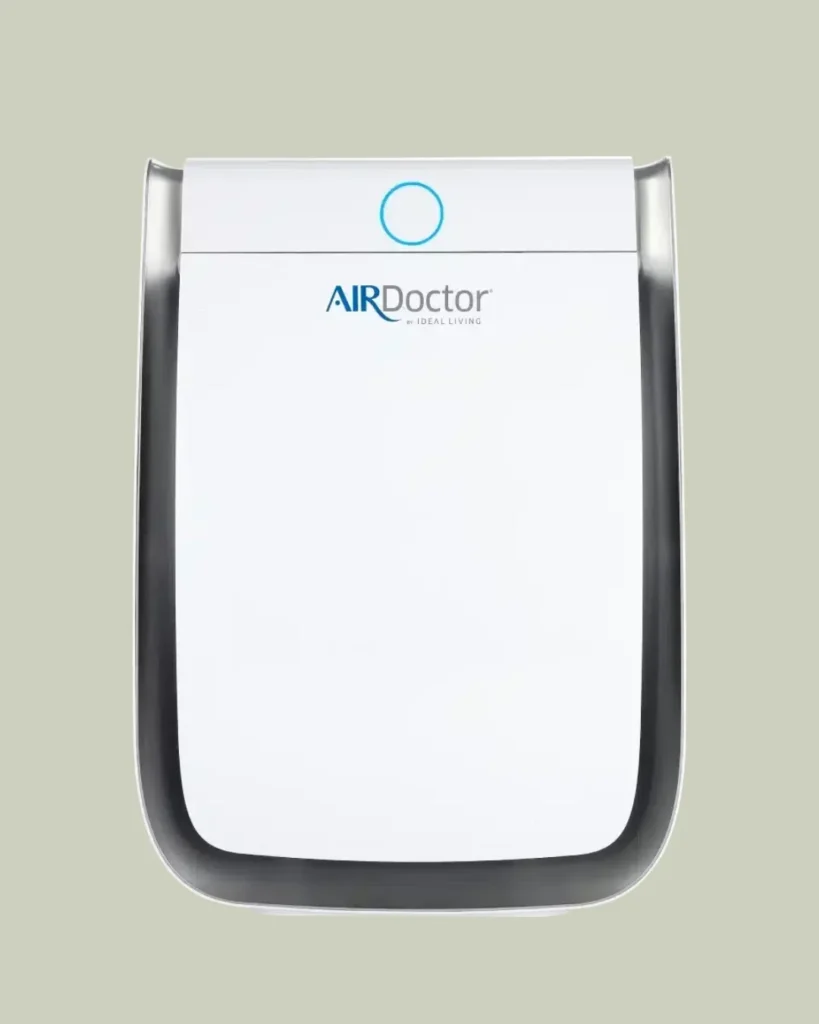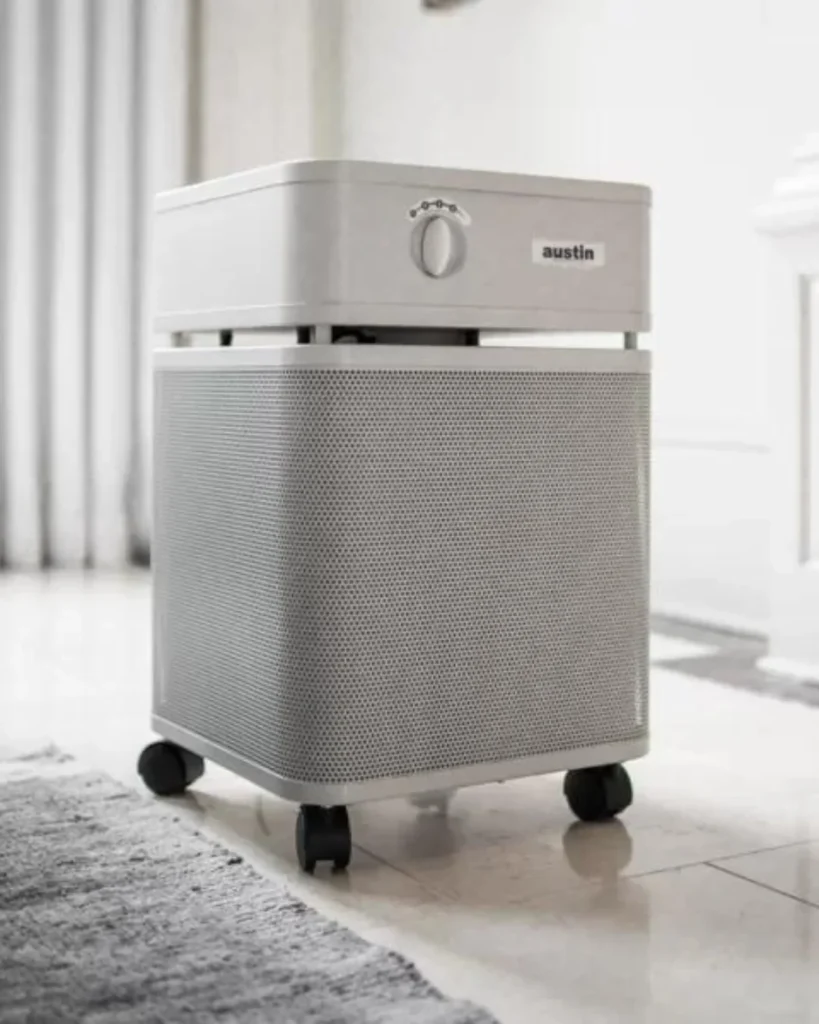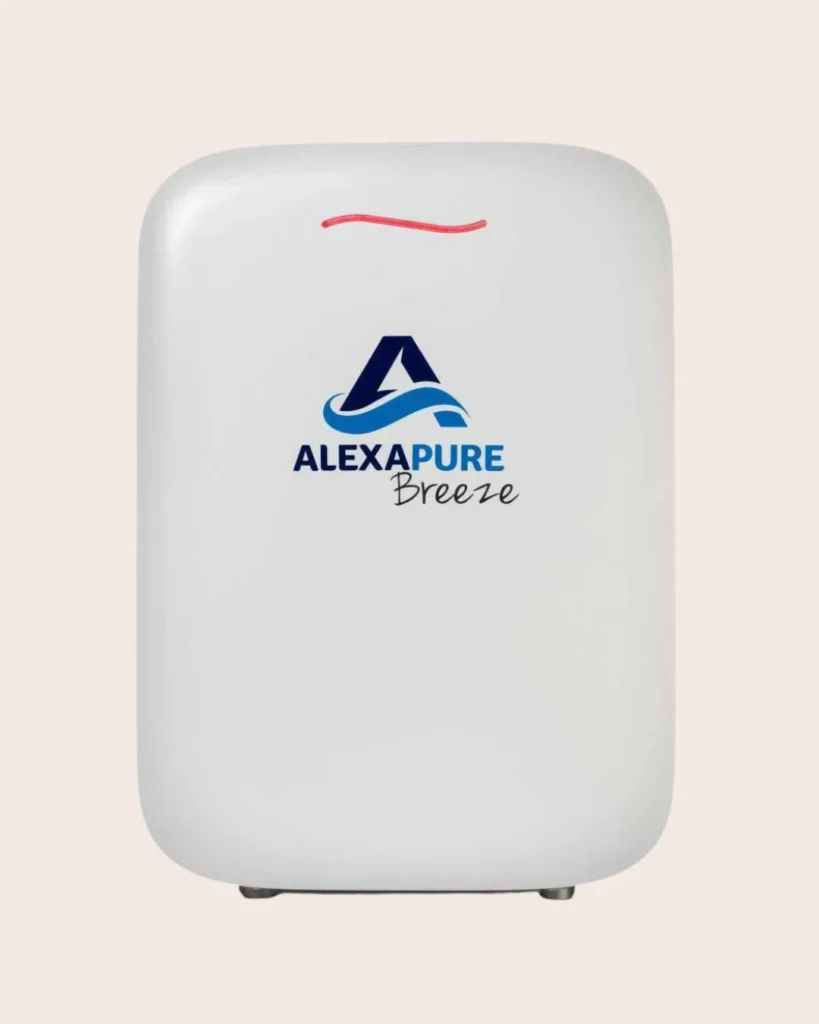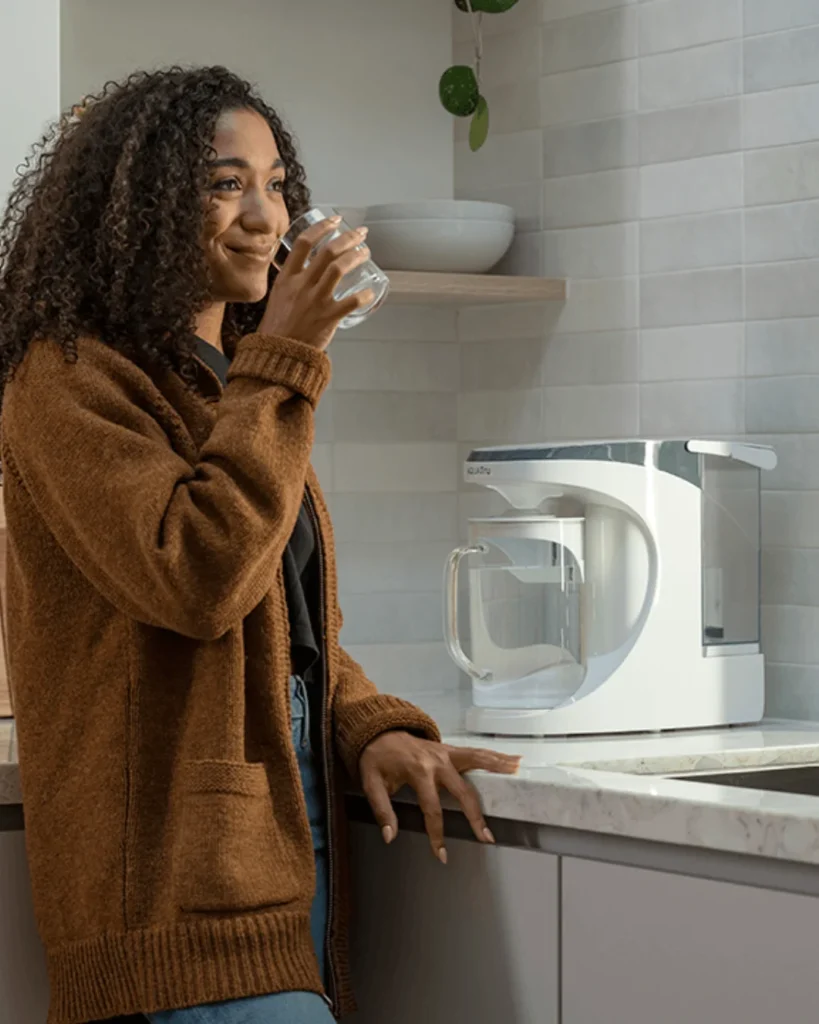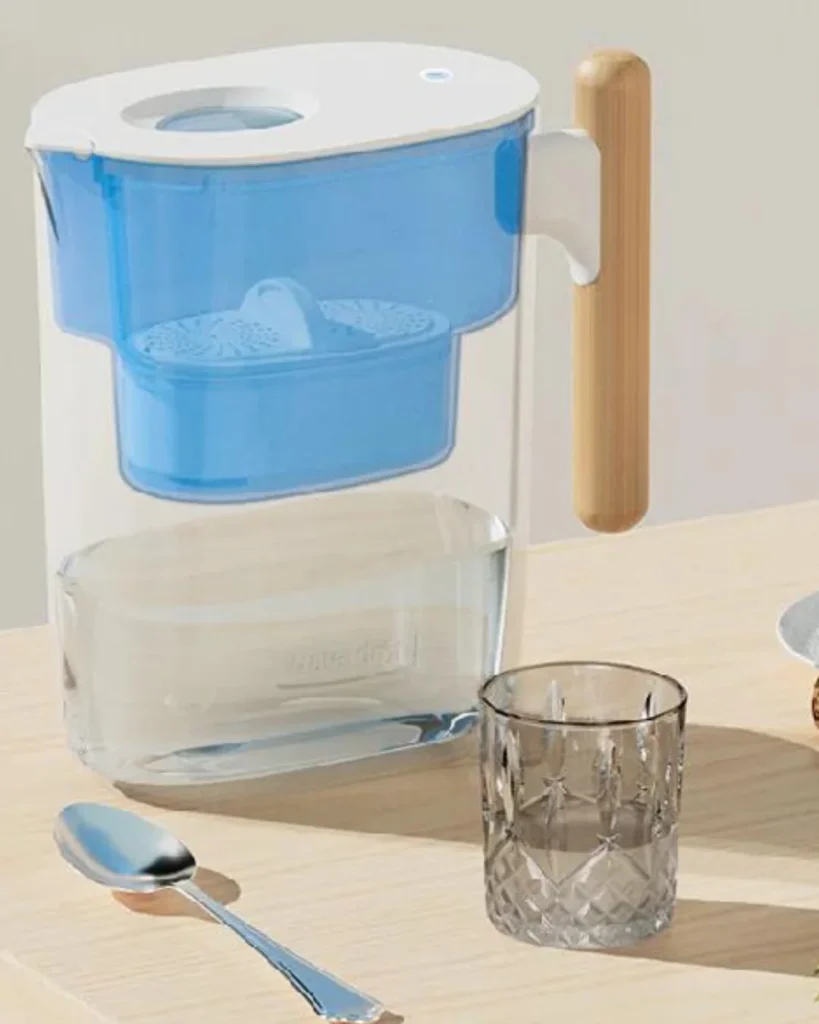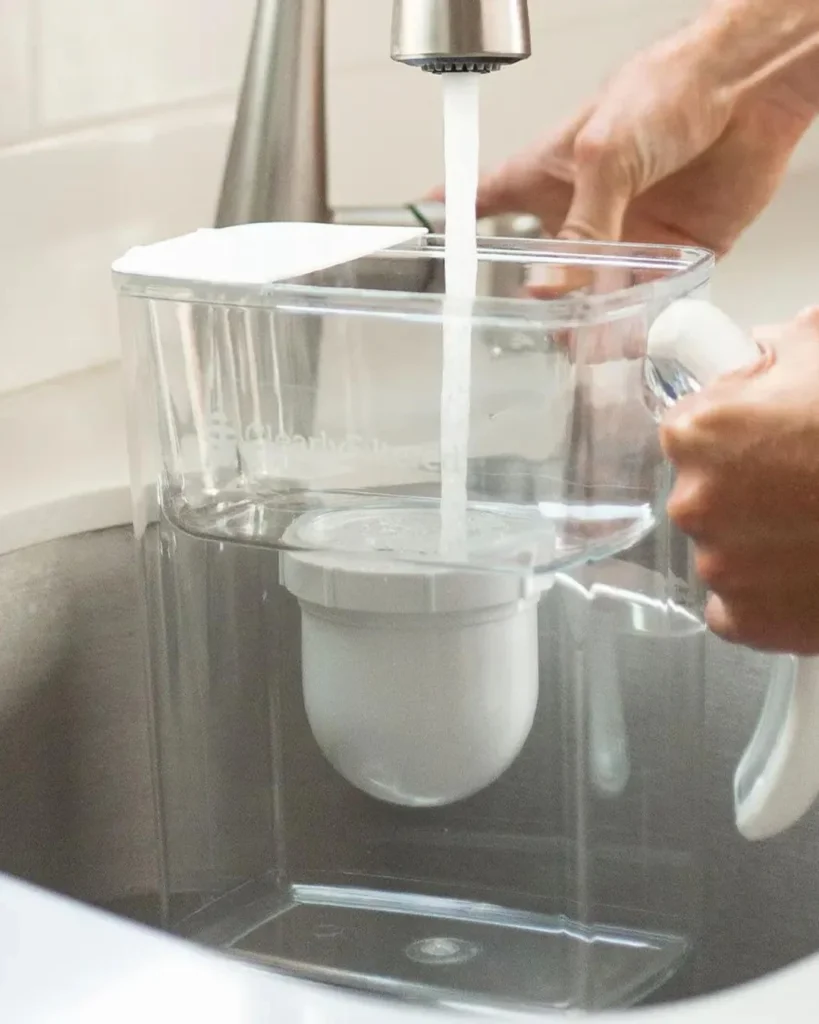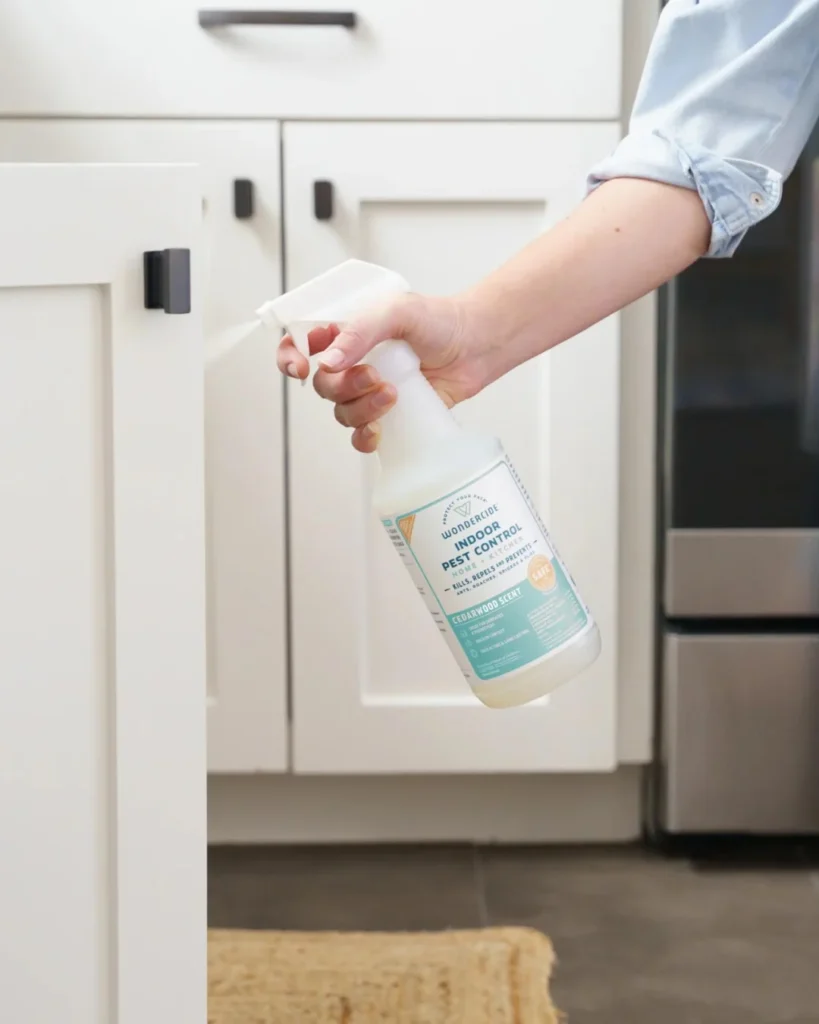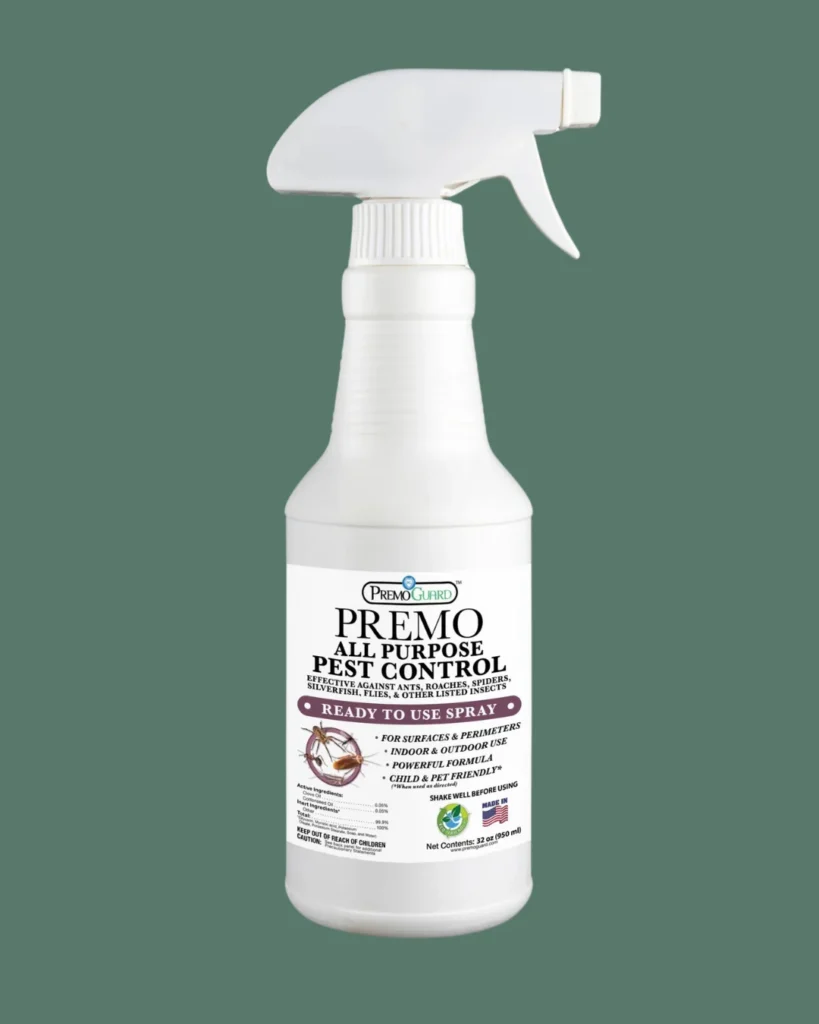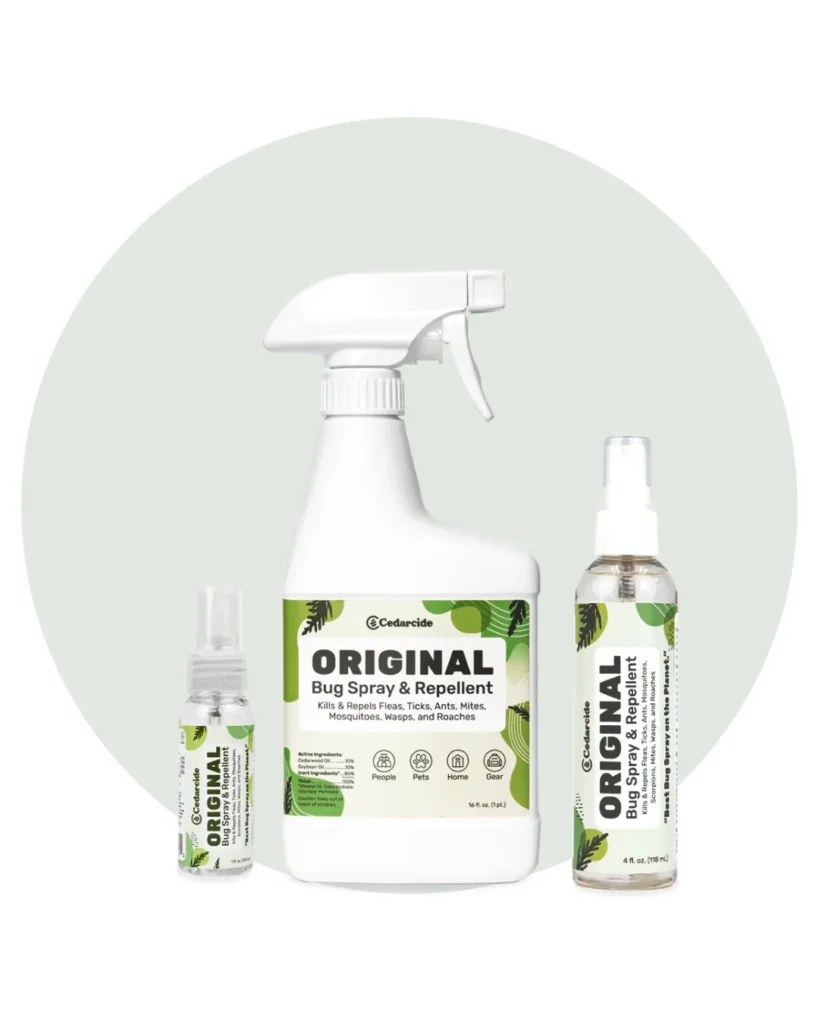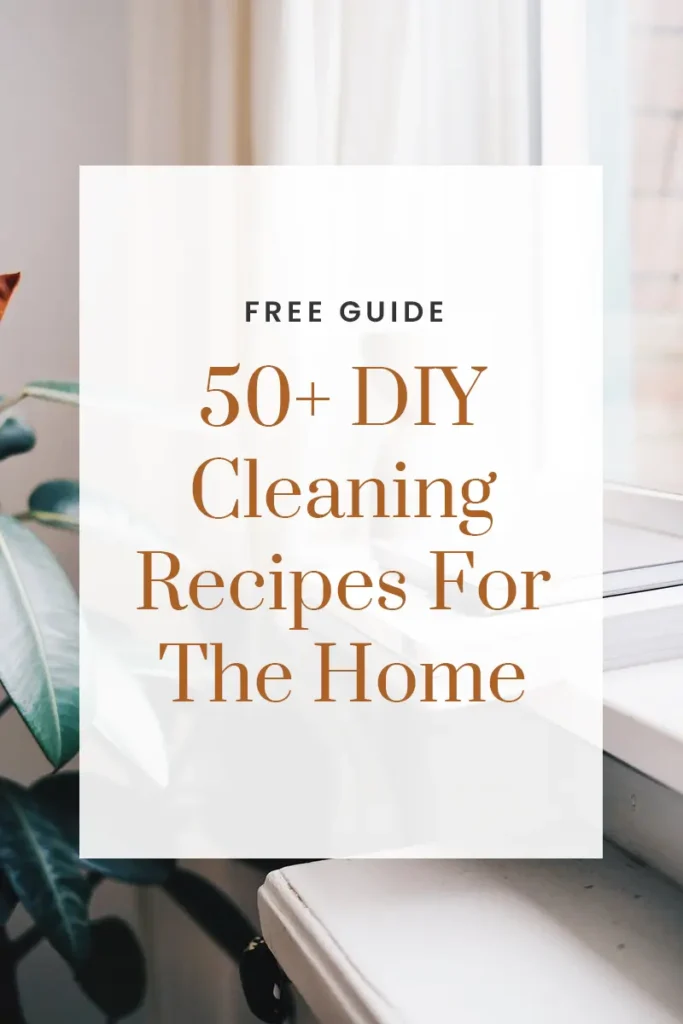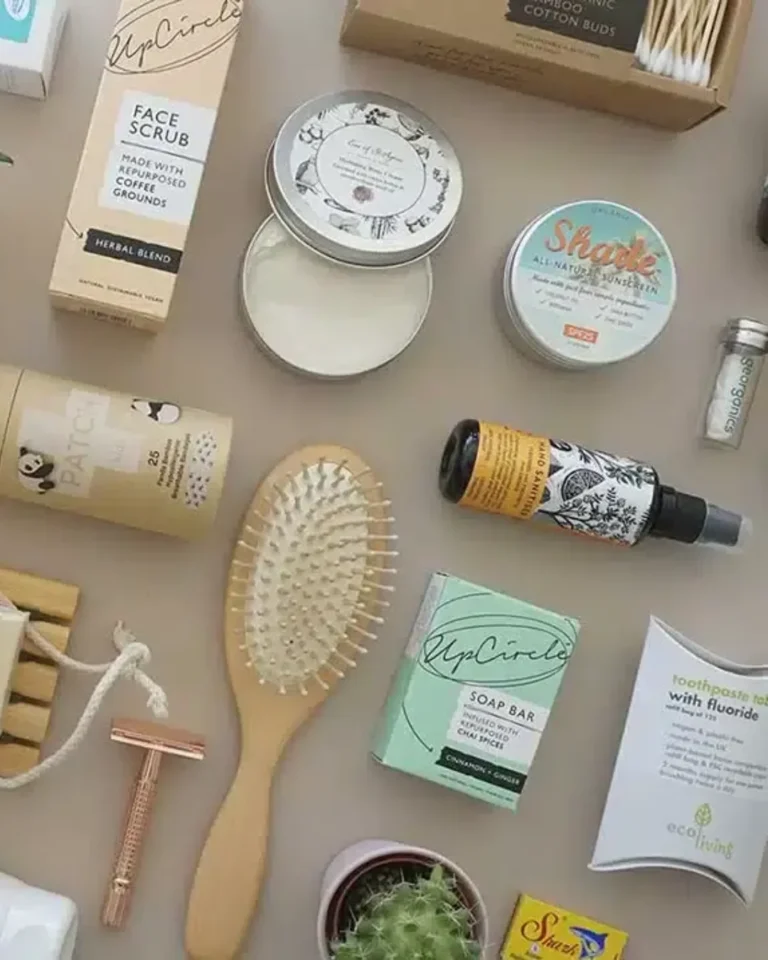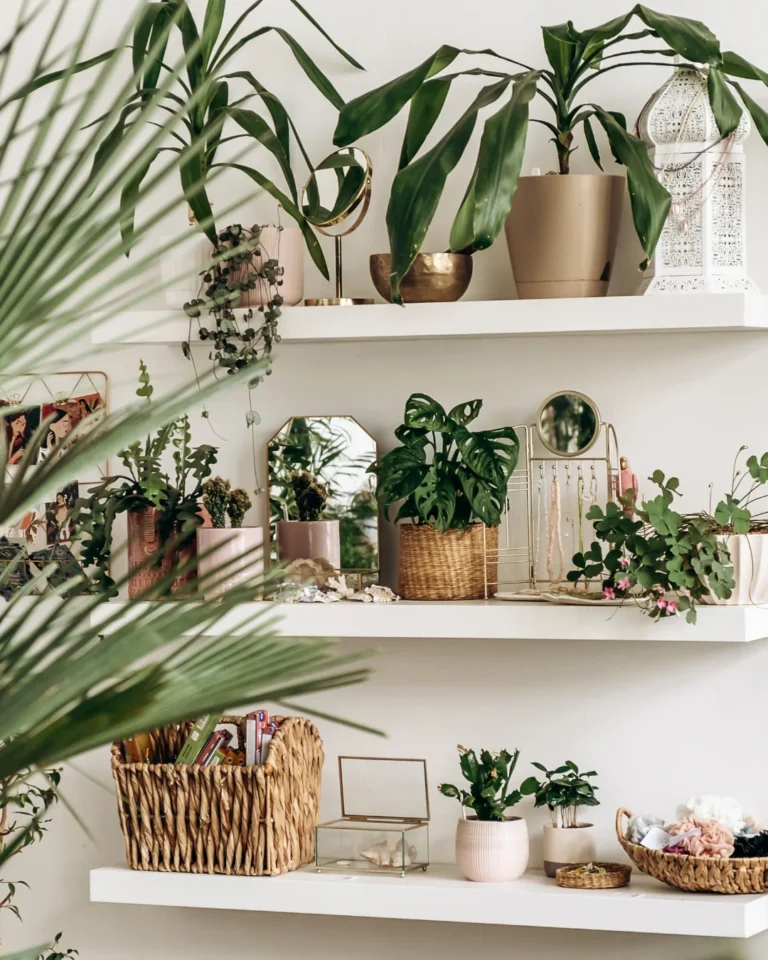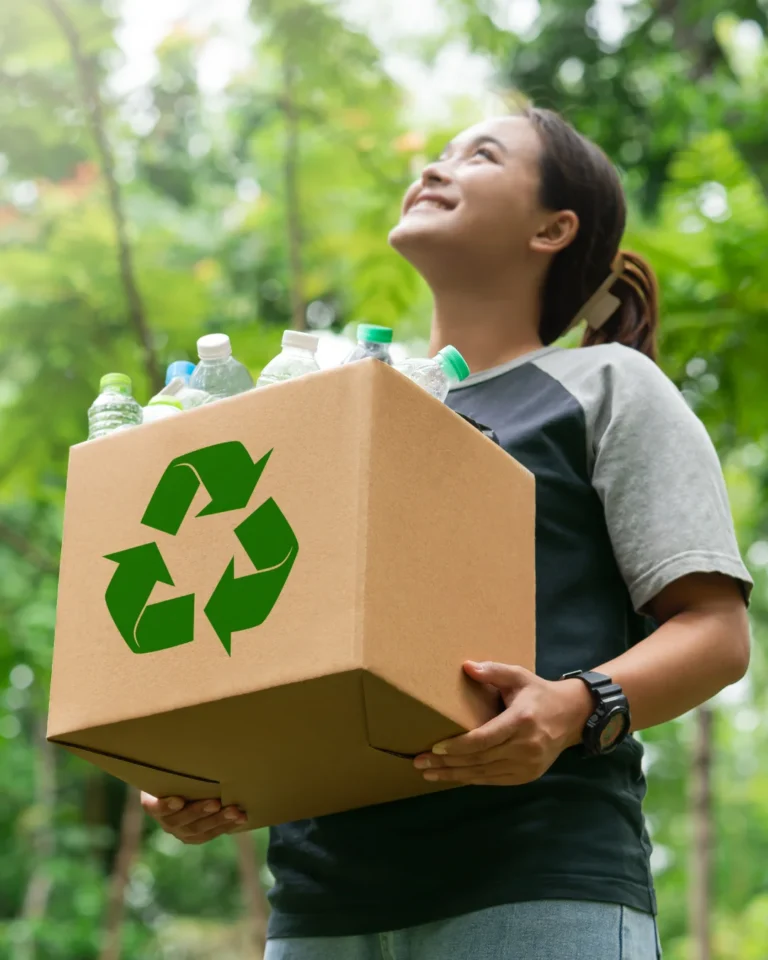SKL is reader supported. When you buy through links on our site, we may earn affiliate commission. Learn more here.
Are you living in an urban jungle but looking to embrace a healthier non-toxic lifestyle?
We’ve got you covered with this practical non-toxic living guide for urban dwellers full of practical tips and insights.
Living in the city comes with its own unique set of challenges when it comes to reducing your exposure to harmful chemicals. From air pollution to limited space, it can feel like an uphill battle.
But by making small, conscious choices in your daily life, you can create a healthier home and lifestyle that benefits both you and the planet.
By focusing on simple swaps and easy-to-implement changes, you can gradually detox your home and create a safer environment for yourself and your loved ones.
From choosing non-toxic cleaning products to investing in air-purifying houseplants, there are countless ways to reduce your exposure to harmful chemicals without sacrificing convenience or breaking the bank.
Common Sources of Toxins in Urban Environments
From the moment you wake up until you rest your head at night, you’re exposed to a variety of toxins when you live in a city.
Some of the most common culprits include:
Household Cleaners: Those powerful, scented cleaners might leave your home sparkling, but they often contain harmful chemicals like volatile organic compounds (VOCs) that can irritate your respiratory system.
Furniture and Paint: That new couch smell might be caused by off-gassing from chemicals like formaldehyde and flame retardants, contributing to indoor air pollution.
Pesticides and Herbicides: City parks and green spaces are often treated with these chemicals, which can linger in the air and soil.
Water Contaminants: Even with municipal water treatment, our taps can still contain traces of heavy metals, pharmaceuticals, and other pollutants.
Health Impacts of Chronic Toxin Exposure
Chronic exposure to toxins in the environment and the products that you use every day can lead to a range of adverse effects, such as:
- Respiratory issues, headaches, and dizziness from inhaling VOCs.
- Hormonal imbalances and reproductive problems caused by endocrine disruptors.
- Increased risk of certain cancers and other chronic diseases.
- Neurological effects, including cognitive decline and developmental issues in children.
Long-Term Benefits of Going Non-Toxic
Embracing a non-toxic lifestyle in the city may seem daunting at first, but the lasting benefits to your health make it worthwhile.
While it might require some initial effort and adjustments, the benefits are well worth it. There are a lot of benefits that come with making an effort to incorporate more non-toxic products and practices into your daily life.
By avoiding dangerous toxins you’ll not only enjoy cleaner air, water, and living spaces, but you’ll also support your overall health so you can feel your absolute best.
Why can it be challenging to go non-toxic when living in a city?
Increased Exposure to Pollution
One of the biggest challenges of urban living is the constant exposure to pollutants.
From the moment you step outside, you’re greeted by a cocktail of vehicle emissions, industrial pollutants, and other airborne toxins.
These pollutants can make their way into your home, compromising your indoor air quality.
Small Living Spaces
The limited square footage common in city apartments and condos can unfortunately worsen the impact of toxic chemicals within your living space. Here’s why:
Limited Air Volume: Smaller spaces have less air to dilute airborne toxins like VOCs, leading to higher concentrations that you then breathe in.
Reduced Ventilation: Often, smaller spaces have fewer windows and doors, or rely on less effective ventilation systems, limiting the exchange of fresh air and trapping pollutants indoors.
Closer Proximity to Sources: In a smaller space, you’re simply closer to sources of VOCs and other chemicals, like furniture or cleaning products, increasing your exposure and potential harm.
Busy Lifestyles
The fast-paced nature of city life can make it challenging to prioritize non-toxic living.
When you’re juggling work, social commitments, and a lengthy commute, finding the time to cook from scratch, research non-toxic products, or engage in environmentally friendly practices can feel overwhelming.
Lack of Control Over Building Materials and Environmental Factors
Living in a city, you might have little control over the materials used in your building or the environmental factors surrounding it.
From lead-based paint to asbestos insulation, many older buildings contain toxins that can be difficult to completely eliminate.
Information Overload
With so much information available about non-toxic living, it can be challenging to determine what’s truly important and effective.
Sifting through conflicting advice and separating fact from fiction can be a daunting task, leading to decision fatigue.
While these challenges might seem overwhelming, remember that every small step counts.
By focusing on the changes you can make within your control and finding creative solutions to urban-specific hurdles, you can successfully navigate a non-toxic lifestyle in the city.
Your 7-Step Non-Toxic Living Guide For Urban Dwellers
Step 1: Assess Your Living Space
The first step to creating a non-toxic home in the city is to understand where toxic chemicals might be hiding in your home. Here are some easy places to start:
Look For Sources of Indoor Air Pollution
- Volatile organic compounds (VOCs) from paint, furniture, cleaning products, and building materials.
- Outdoor pollutants that seep into your home through windows or ventilation systems.
Consider the Quality of Your Tap Water
- Check local water quality reports for information on contaminants.
- Look for signs of old pipes or plumbing issues that could contribute to contamination.
Examine Your Food Choices and Storage Habits
- Are you cooking food in cookware with a non-stick coating?
- Are you storing food in plastic containers that could leach chemicals?
Assess Your Cleaning Products and Habits
- Are you using harsh chemicals that could irritate your skin and lungs?
- Look for products with clear and comprehensive ingredient lists.
- Avoid those with vague terms like “fragrance” or “preservatives,” as these can hide a multitude of chemicals
Consider Your Furniture and Furnishings
- Are your carpets, rugs, or furniture made with synthetic materials that could off-gas VOCs?
- Is your furniture treated with stain repellents or flame retardants?
- Do you have pieces made with particle board, engineered wood, PVC, or vinyl?
Prioritizing Areas for Improvement
After identifying potential toxin sources, prioritize the areas that pose the greatest risk to your health and well-being.
Start with the Basics: Focus on areas with the most frequent and prolonged exposure, such as your bedroom (where you spend a significant amount of time) and your kitchen (where you prepare and eat food).
Consider Your Sensitivity: If you have allergies or sensitivities, prioritize areas that trigger your symptoms.
Choose Easy Wins: Begin with simple swaps and changes that you can easily implement, such as switching to natural cleaning products.
Remember, creating a non-toxic home is a process, not an overnight transformation. By assessing your living space and prioritizing areas for improvement, you can develop a realistic and achievable plan for change.
Step 2: Swap Your Cleaning Products For Non-Toxic Options
Transitioning to natural cleaning products is one of the most impactful first steps you can take on your journey to non-toxic living. Here’s why:
Frequent and Direct Exposure: We use cleaning products often, and the nature of their use means we breathe in their fumes, get them on our skin, and can even accidentally ingest small amounts. This makes them a significant source of potentially harmful chemical exposure.
Harmful Ingredients: Many conventional cleaning products contain VOCs, phthalates, synthetic fragrances, and other ingredients linked to various health issues. These effects can be immediate, like eye irritation and headaches, or long-term, like respiratory problems and hormonal disruption.
Poor Indoor Air Quality: Chemical cleaners release VOCs into the air, contributing to poor indoor air quality. In spaces with limited ventilation, these VOCs can accumulate and affect the health of everyone in your home.
When it comes to non-toxic cleaning, you have two great options:
DIY Cleaning Products: You can easily create your own effective cleaning solutions using common household ingredients like vinegar, baking soda, and rubbing alcohol. This is a cost-effective and customizable approach.
Pre-Made Organic Cleaners: If you prefer the convenience of ready-made products, there are many excellent organic cleaning options available. These products offer peace of mind with their pre-vetted ingredients and formulations.
Trusted Organic Cleaning Products to Consider
Sometimes simple is better. And that’s definitely the case with Rustic Strength’s Organic White Cleaning Vinegar.
With its 50-grain concentration, this vinegar is perfect for tackling a wide range of cleaning tasks, from removing sticky residues and odors to polishing metal surfaces and unclogging drains.
Price
$11.00
ingredients
Certified organic white vinegar (5%)
location/shipping
United States, ships within the US and Canada.
Greenerways Organic All-Purpose Cleaner will be your go-to solution for a sparkling clean home.
This USDA-certified organic and non-GMO cleaner is made in the USA and effectively tackles messes on all sorts of surfaces, from kitchen countertops and bathroom mirrors to gym equipment and car interiors.
Price
$13.99
ingredients
Water, Tea Tree Oil, Lemongrass Oil, Cinnamon Oil, Spearmint Oil, Rosemary Oil, Orange Oil, Sucrose Cocoate
location/shipping
United States, ships worldwide via Amazon.
Black and Berry’s Citrus All-Purpose Cleaner harnesses the power of nature to keep your home sparkling clean.
This powerful cleaner, formulated with raw unfiltered organic apple cider vinegar and essential oils, is a versatile solution for tackling grime in every room of your house.
Price
$14.99
ingredients
Raw unfiltered organic apple cider vinegar, Organic lemon essential oil, Organic orange essential oil, Organic acacia gum, Water
location/shipping
United States, ships within the US.
Step 3: Consider Ways To Improve Your Indoor Air Quality
If you live in an urban environment you’re likely exposed to a significant amount of outdoor air pollution.
That’s why prioritizing clean air inside your home is crucial. It forms the foundation for a healthy living space and complements your other efforts to reduce toxins.
By focusing on air quality, you directly address a major source of potential harm while creating a more comfortable and healthy home.
This sets the stage for further reducing your chemical exposure and establishing a truly non-toxic home.
Choosing the Right Air Purifier for Your Small Space
A good indoor air purifier will help to remove pollutants, allergens, and toxins from the air. When selecting an air purifier for your small space, consider the following factors:
- Look for true HEPA filters. These filters capture 99.97% of particles as small as 0.3 microns, including dust, pollen, pet dander, and even some bacteria and viruses.
- Consider a combination filter. Some purifiers combine HEPA filters with activated carbon filters. Activated carbon helps absorb odors, smoke, and volatile organic compounds (VOCs) released by common household products.
- Opt for a compact purifier that fits your space without being bulky.
Recommended Air Purifiers for Small Spaces
The Air Doctor 3500 is a powerhouse when it comes to cleaning the air in large rooms, especially in open-concept homes.
Their proprietary UltraHEPA filter captures an impressive 99.99% of airborne particles down to 0.003 microns (100 times smaller than what standard HEPA filters can handle!)
It also features dual-action Carbon Gas Trap VOC filters to eliminate odors and toxic gasses.
Price
$629
purification type
Pre-Filter, UltraHEPA Filter, Dual-Action Carbon/Gas Trap/VOC Filter
notable features
1-Year Limited Warranty, 3-stage filtration, Filter change alerts, Indoor temperature & humidity monitoring, Control from your smartphone
The Austin Air Healthmate is like having a medical-grade air purifier in your own home.
This air purifier uses a combination of a pre-filter, activated carbon and zeolite, and a medical-grade HEPA filter to remove up to 99% of airborne contaminants, including viruses, bacteria, dust, dander, and allergens.
Price
$715
purification type
Pre-Filter, Activated Carbon and Zeolite, Medical Grade HEPA Filter
notable features
5-Year Mechanical Warranty, Medical Grade HEPA Reduces Viral Load to Minimize Risk of Infection, Removes Bacteria, Dust, Dander and Allergens
The Alexapure Breeze is the perfect solution for those who want cleaner air without the noise that comes with most air purifiers.
Perfect for small living spaces with nearby neighbors.
This compact unit uses a 4-stage filtration process to remove up to 99.97% of airborne particles, including smoke, pollen, and pet dander.
Price
$279.99
purification type
Pre-Filter, Activated Carbon Filter, HEPA Filter, Ioncluster Technology
notable features
6-Year Warranty, True HEPA filtration, Built-in Filter Indicator, Designed For Rooms Up To 800 sq ft
Air-Purifying Plants for Small Spaces
Houseplants are a great affordable way to filter the air in your home. They also add a touch of nature to your urban oasis and help purify the air by absorbing toxins and releasing oxygen.
Some of the best air-purifying houseplants for small spaces include:
Snake Plant: A low-maintenance plant that releases oxygen at night, making it ideal for bedrooms.
Spider Plant: This easy-to-care-for plant is known for removing formaldehyde and other VOCs.
Peace Lily: A beautiful flowering plant that helps filter benzene, trichloroethylene, and other toxins.
Step 4: Filter Your Tap Water
If you live in a city, it’s wise to be aware of your tap water quality.
Aging infrastructure is a common issue in many urban areas, with old pipes that can crack and corrode over time. This deterioration allows contaminants to leach into the water supply.
Additionally, urban runoff from roads and industrial activities can introduce heavy metals, pesticides, and other harmful chemicals into the water you drink.
Emerging contaminants like pharmaceuticals and toxic chemicals from personal care products should also pose a growing concern.
These substances can end up in the water supply and may not be completely removed by standard water treatment processes.
Filtering your tap water is an effective way to significantly reduce your exposure to these various contaminants so you know you’re consuming clean and safe drinking water.
Understanding City Water Quality Issues
Before choosing a water filtration system, it’s essential to understand the potential contaminants in your city’s water supply.
Knowing the contaminants in your drinking water will help you to identify the right type of water filter you need.
The best place to start is by reading your city’s annual water quality report. By law, your water utility is required to provide an annual water quality report to users.
This report will detail the source of your water, the contaminants detected, and their levels in comparison to regulatory standards.
You can usually find this report online or request a copy from your water provider.
Recommended Non-Toxic Water Filter Pitchers
The AquaTru Countertop Reverse Osmosis Water Purifier has a patented 4-stage Ultra Reverse Osmosis technology, which removes an impressive variety of contaminants like lead, chromium 6, PFAS, nitrates, chlorine, and more.
Plus the system is certified to NSF/ANSI standards for PFOA and PFOS reduction, so you can have peace of mind that you’re drinking cleaner water.
Price
$349.00
notable features
1-Year Limited Warranty, Certified to remove PFAS, meeting NSF/ANSI standards for PFOA and PFOS reduction, 4-Stage Ultra Reverse Osmosis also removes lead, chromium6, and nitrates, Made from glass and BPA-free plastic components
filters out
Chlorine, Lead, Mercury, Cysts, Giardia lamblia, Endotoxins, Volatile organic chemicals (VOCs), Herbicides, PFOA and PFOS, Pesticides, Pharmaceuticals, Pentavalent arsenic
The Waterdrop Chubby water filter pitcher sets itself apart with its multi-stage filtration system.
Effectively reducing 97.4% of chlorine and other contaminants while preserving beneficial minerals.
Certified by NSF 42 and 372, this pitcher ensures the highest quality water.
Price
$27.49
notable features
1-Year Warranty, 7-layer filtrations specifically designed to target heavy metals like lead and PFAS, Made from BPA-free plastic ensuring no harmful chemicals are added to your water during filtration, NSF Certified
filters out
Chlorine, Fluoride, Lead, Limescale, Sediment, Chlorine, Iron, Calcium, Magnesium, Metal Ions, Copper, Mercury, PFAS
The ClearlyFiltered water pitcher uses Affinity Filtration Technology to remove an impressive 365+ contaminants, including fluoride, chlorine, lead, PFAS, and arsenic.
This far surpasses typical pitchers that only target a handful of water contaminants.
This water filter has also been independently tested by third-party labs to ensure compliance with NSF/ANSI standards 42, 53, 401, and 473, guaranteeing your protection with every sip.
Price
$90.00
notable features
Limited Lifetime Warranty, Made from BPA/BPS and phthalate-free Tritan plastic, Affinity filtration system designed to specifically remove PFAS, NSF/ANSI Standard 53 Certified
filters out
Aluminum, Arsenic, Asbestos, Atrazine, Benzene, Cadmium, Chlorine, Chromium 6, Copper, DDT, Detergents, Fluoride, Glyphosate, Herbicides, Lead, Mercury, Nitrates & Nitrites, Pesticides, PFOA/PFOS/PCBs, Radon 222, Trihalomethanes, VOC’s
Step 5: Opt For Non-Toxic Furniture and Decor
City living exposes you to a constant barrage of outdoor pollutants. Choosing non-toxic furniture is a great way to counteract this.
Since outdoor pollution easily seeps indoors, furniture that doesn’t release additional toxins helps keep your home’s air cleaner.
Many furniture pieces contain harmful chemicals that can be released into the air you breathe or absorbed through your skin.
Non-Toxic Mattresses and Bedding
Since you spend a significant portion of your life in bed, choosing a mattress made with natural, plant-based materials can greatly benefit your health.
Avoid Synthetic Materials: Conventional mattresses often contain polyurethane foam, which can off-gas VOCs and flame retardants. Look for mattresses made with natural materials like organic latex, wool, or cotton.
Choose GOTS Certified Organic Bedding: The Global Organic Textile Standard (GOTS) ensures that textiles are made with organic fibers and processed without harmful chemicals.
Consider Wool or Cotton Mattresses: These natural materials are breathable, hypoallergenic, and naturally flame-resistant.
Look for Natural Fillings: For pillows and comforters, choose natural fillings like wool, down, or buckwheat hulls instead of synthetic fibers.
Selecting Non-Toxic Furniture
Here’s what to look for when selecting non-toxic furniture for your home:
Opt for Solid Wood: Choose furniture crafted from solid, untreated wood like maple, oak, or birch. These natural materials are not only durable but also less likely to release harmful chemicals into your home.
Avoid Pressed Wood Products: Particleboard, chipboard, and MDF often contain formaldehyde, a known carcinogen. If you must use these materials, choose products with NAF or ULEF labels, indicating lower formaldehyde emissions.
Choose Natural Fibers: For upholstered furniture, prioritize natural fibers like organic cotton, wool, or hemp. These are preferable to synthetic materials like polyester or nylon, which can release harmful chemicals.
Look for Certifications: Certifications like Greenguard Gold or OEKO-TEX Standard 100 signify that the furniture has undergone testing for harmful substances and meets stringent emission standards.
Use Low-VOC Paints and Finishes
Look for Zero- or Low-VOC Paints: These paints contain minimal or no VOCs, making them a safer choice for your home. Many brands now offer high-quality, durable paints with low or zero VOCs.
Choose Water-Based Finishes: For wood furniture and floors, opt for non-toxic furniture finishes like water-based stains, sealants, and varnishes over solvent-based options. Water-based finishes typically have lower VOC emissions.
Consider Natural Alternatives: Milk paint, natural oil finishes (like linseed or tung oil), and beeswax are excellent non-toxic options for furniture and wood surfaces.
Step 6: Stock Your Kitchen With Non-Toxic Essentials
When it comes to non-toxic living in the city, your kitchen plays a crucial role.
The cookware you use and how you store your food can significantly impact your exposure to harmful chemicals.
Safe Cookware Alternatives
When looking for non-toxic cookware, avoid non-stick options coated with Teflon or other PFCs (perfluorinated chemicals), as these can release toxic fumes when heated.
Here are some better options to look for:
Stainless Steel: Durable, versatile, and non-reactive, stainless steel is a great choice for everyday cooking. Look for 18/8 or 18/10 stainless steel, which contains chromium and nickel for added corrosion resistance.
Cast Iron: Cast iron is naturally non-stick when seasoned properly and can last a lifetime. It also adds a small amount of iron to your food, which can be beneficial for some individuals.
Glass: Oven-safe and non-reactive, glass cookware is a safe option for baking and reheating. Look for borosilicate glass, which is more resistant to thermal shock than regular glass.
Use Non-Toxic Food Storage Solutions
Glass Containers: Glass is inert and won’t leach chemicals into your food. It’s also microwave and dishwasher-safe, making it a convenient and versatile option.
Stainless Steel Containers: Durable and long-lasting, stainless steel containers are great for packing lunches, storing leftovers, or taking food on the go.
Beeswax Wraps: These reusable wraps made from cotton fabric coated with beeswax are a sustainable alternative to plastic wrap. They’re perfect for covering bowls or wrapping sandwiches and snacks.
Silicone Bags: Reusable silicone bags are a good option for storing food in the freezer or refrigerator. Look for food-grade silicone that’s free of BPA and other harmful chemicals.
Parchment Paper: Unbleached parchment paper is a safe and convenient option for lining baking sheets or wrapping food for storage.
Additional Tips
Avoid Plastic: Plastic containers can leach chemicals into your food, especially when heated. Opt for glass or stainless steel whenever possible.
Choose BPA-Free: If you must use plastic, look for containers labeled as BPA-free (bisphenol However, even BPA-free plastics can contain other potentially harmful chemicals.
Clean Regularly: Wash your food storage containers thoroughly after each use to prevent bacterial growth.
Step 7: Use Non-Toxic Pest Control Methods
Living in the city, you’re bound to encounter some unwanted guests from time to time.
But before you reach for the harsh chemical pesticides, consider these effective and non-toxic pest control methods that are safe for you, your family, and the environment.
Prevention is Key
- Regularly clean your kitchen, sweep and vacuum floors, and wipe down surfaces. Crumbs and food residue attract ants and cockroaches.
- Store food in airtight containers to deter pantry pests like weevils and moths.
- Seal cracks and crevices around doors, windows, and pipes to prevent pests from entering your home.
- Fix leaks and ensure good ventilation to discourage moisture-loving pests like silverfish and cockroaches.
- Empty trash bins regularly and keep them sealed.
Use Natural Repellents
Essential Oils: Certain essential oils like peppermint, lavender, tea tree, and eucalyptus act as natural repellents for various pests. You can mix a few drops in water and spray around entry points or use them in a diffuser.
Citrus Peels: The strong scent of citrus deters ants and spiders. Scatter citrus peels around areas where you’ve seen these pests.
Diatomaceous Earth (DE): This powder is made from fossilized diatoms and works by dehydrating insects. Sprinkle it around baseboards, under sinks, and in other areas where pests are likely to crawl.
Vinegar: A mixture of vinegar and water can be sprayed on surfaces to deter ants and other insects.
Recommended Non-Toxic Pest Control Methods
Say goodbye to pesky ants, roaches, fleas, and ticks with Cedarwood Indoor Pest Control.
This super effective, non-toxic pest control spray is infused with natural cedarwood essential oil, leaving your home smelling fresh while kicking pests to the curb.
Price
$36.99
active ingredients
Cedarwood Oil
location/shipping
United States, ships within the US.
Premo Guard’s All Purpose Pest Control Spray is your one-and-done choice for natural, effective pest control.
This enzyme-based formula is all about steering clear of harsh chemicals without sacrificing effectiveness.
This all-purpose spray gives you quick relief from insect pests, including ants, roaches, spiders, bed bugs, and mites.
Not just an insect repellant, this spray kills insects on contact.
Price
$29.97
active ingredients
Clove Oil, Cottonseed Oil
location/shipping
United States, ships within the US.
Cedarcide is formulated with 10% cedar oil and hydrated silica, ensuring a powerful punch against pesky critters without any of the scary chemicals found in traditional pest control products.
This spray is great for families with little ones and furry friends.
You can spray it directly on your skin, clothing, pets, and around your home without worrying about toxic ingredients harming your loved ones.
Price
$46.50 (on sale for $42.00)
active ingredients
Cedar Oil, Hydrated Silica
location/shipping
United States, ships within the US.
This has been your comprehensive guide to non-toxic living for urban dwellers!
Contrary to what you might think, living in a city doesn’t have to get in the way of your journey toward a non-toxic lifestyle. There are many simple changes you can make to get started on this path to better health.
But more than just a collection of tips and tricks, non-toxic living is a mindset shift. It’s about becoming more aware of the products you bring into your home, the foods you put into your body, and the impact your choices have on the world around you.
It’s about prioritizing your health and recognizing that small changes can add up to a big difference over time. It’s not about striving for perfection, but about making progress one step at a time.
Whether you start by switching to a natural cleaner, investing in an air purifier, or simply opening your windows to let in some fresh air, every action counts.
 Enter To Win An Organic Luxury Mattress From PlushBeds!
Enter To Win An Organic Luxury Mattress From PlushBeds! 